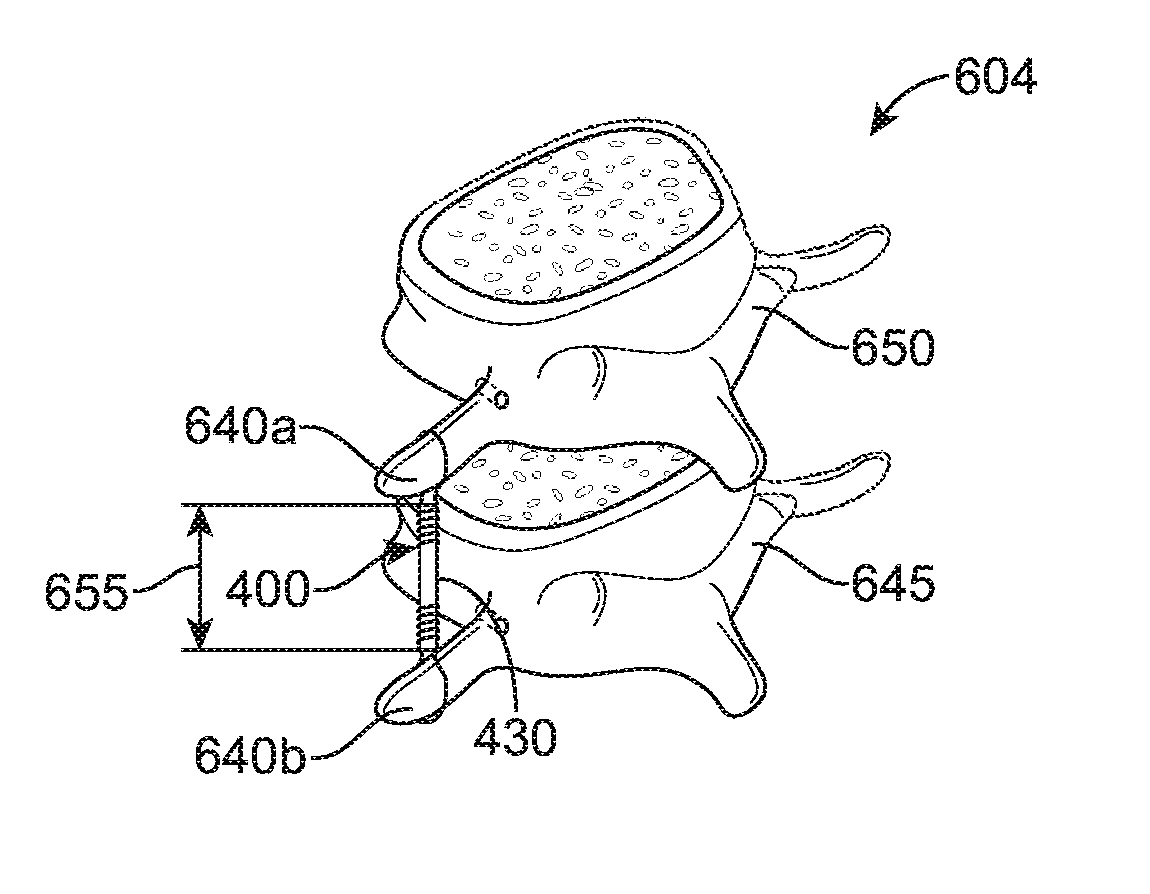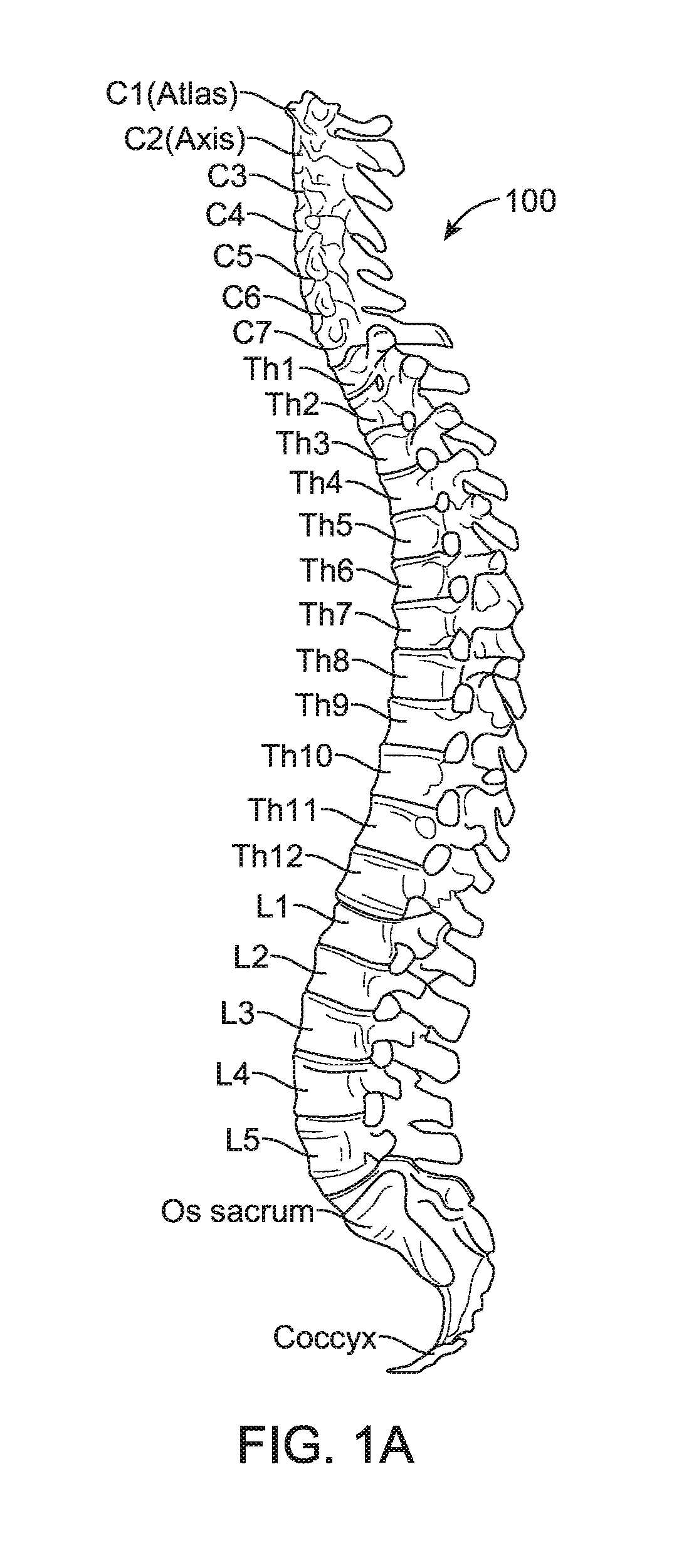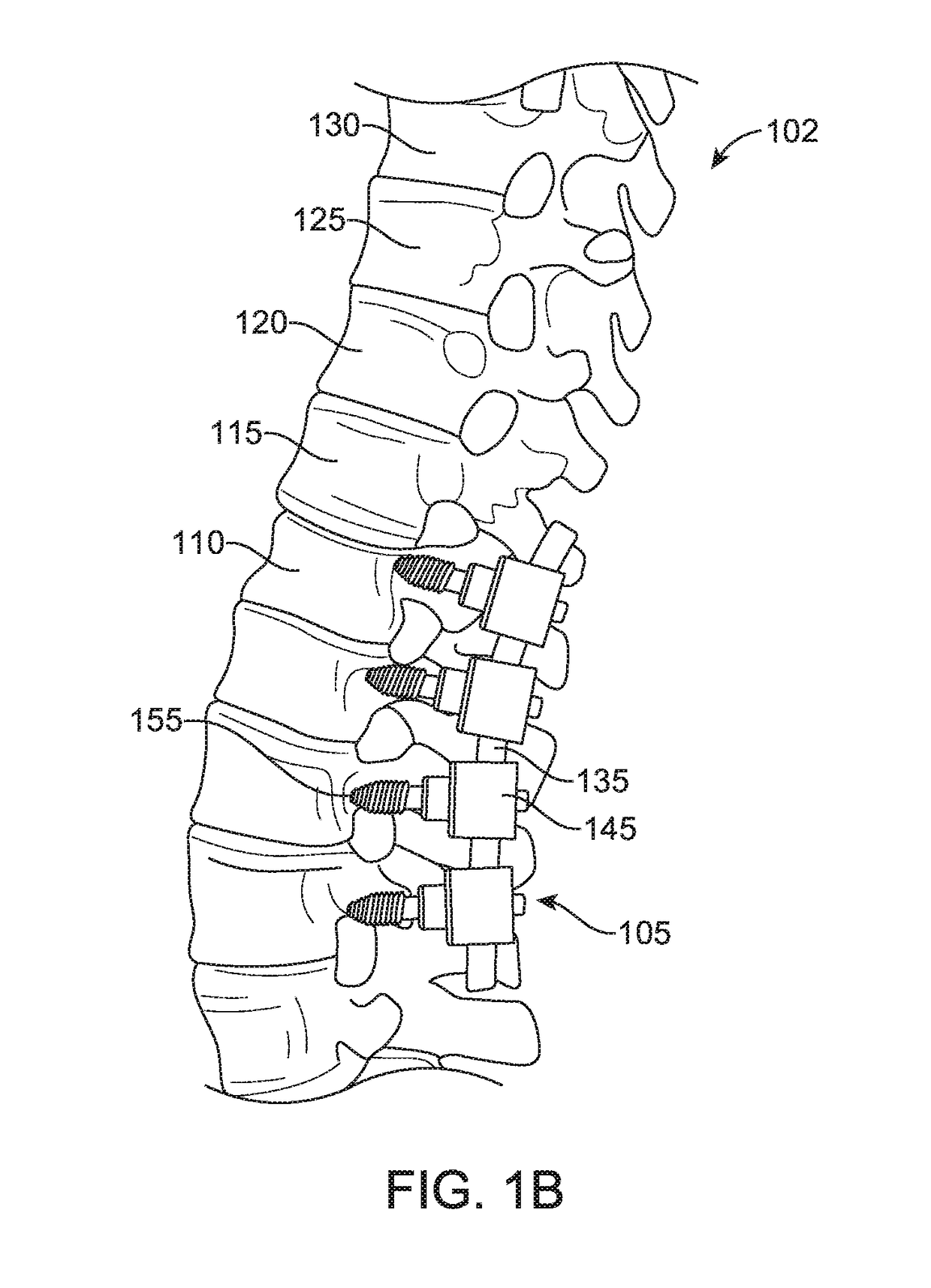Method for preventing vertebra displacement after spinal fusion surgery
a spinal fusion and vertebrae technology, applied in the field of spinal fusion surgery, can solve the problems of severe pain or neurological deficit, and one or more vertebrae near the instrumentation may become displaced, and achieve the effect of preventing vertebrae displacemen
- Summary
- Abstract
- Description
- Claims
- Application Information
AI Technical Summary
Benefits of technology
Problems solved by technology
Method used
Image
Examples
Embodiment Construction
[0037]Embodiments of the present disclosure are directed to systems, methods, devices, and apparatuses for impeding and / or preventing vertebra displacement after a spinal fusion surgery. In various deployments described herein, the disclosure involves a spinal fusion instrumentation implanted into or onto the spine, and / or an apparatus attached to one or more vertebrae of the spine in order to impede and / or prevent vertebra displacement. The apparatus may be configured in terms one or more of materials, characteristics, size, and attachment features, such that lateral displacement of one or more vertebrae positioned vertically from the fused vertebrae is minimized, impeded, and / or prevented, thus facilitating successful and viable spinal correction surgery.
[0038]The details of some example embodiments of the systems, methods, apparatuses, and devices of the present disclosure are set forth in this description and in some cases, in other portions of the disclosure. Other features, ob...
PUM
 Login to View More
Login to View More Abstract
Description
Claims
Application Information
 Login to View More
Login to View More - R&D
- Intellectual Property
- Life Sciences
- Materials
- Tech Scout
- Unparalleled Data Quality
- Higher Quality Content
- 60% Fewer Hallucinations
Browse by: Latest US Patents, China's latest patents, Technical Efficacy Thesaurus, Application Domain, Technology Topic, Popular Technical Reports.
© 2025 PatSnap. All rights reserved.Legal|Privacy policy|Modern Slavery Act Transparency Statement|Sitemap|About US| Contact US: help@patsnap.com



